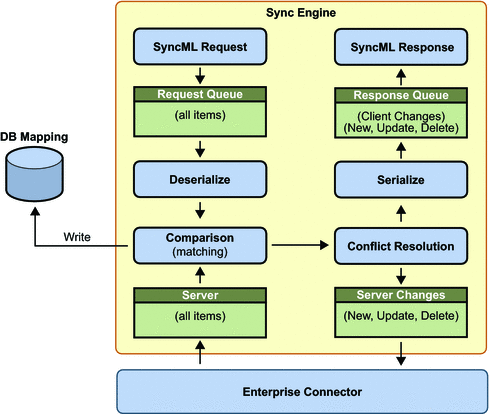Slow Sync
Typically, the very first sync that a client performs is a slow sync. After that, the client performs fast syncs. If the data on the server or client is lost or corrupted, the next sync must be a slow sync.
In practice, a slow sync means that the client sends all its data to the server and the server compares its own data with that sent by the client. After the analysis, the server returns all the modification information to the client. In turn, the client returns the mapping information for all data items added by the server.
If the same record differs between the client and the server, the conflict will be resolved in favor of the server. If a record exists on the client but does not exist on the server, a slow sync will propagate the record to the server. If a record exists on the server but does not exist on the client, a slow sync will propagate the record to the client. If the client and the server were in sync before the slow sync, updates and deletions to records on the client are not propagated to the server. The client records will be overwritten by the corresponding record on the server, in this case.
Figure 1–6 illustrates this process.
Figure 1–6 Slow Sync

- © 2010, Oracle Corporation and/or its affiliates
